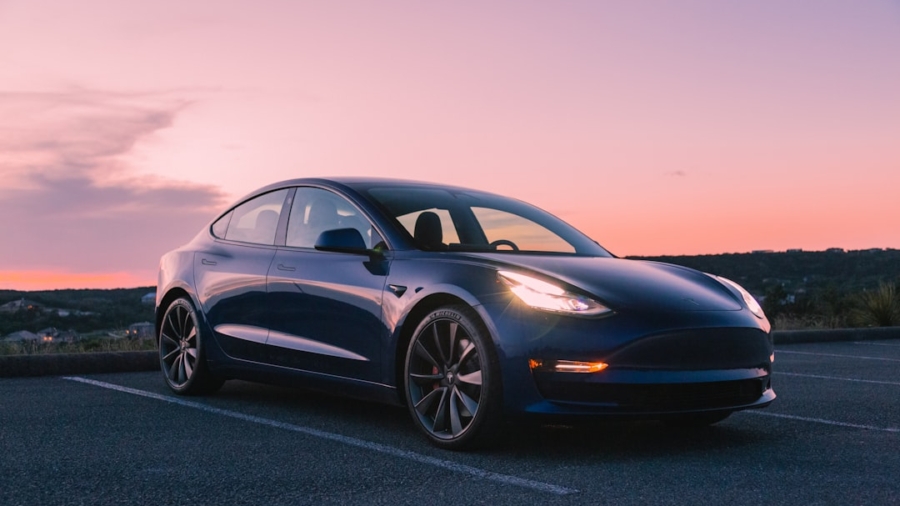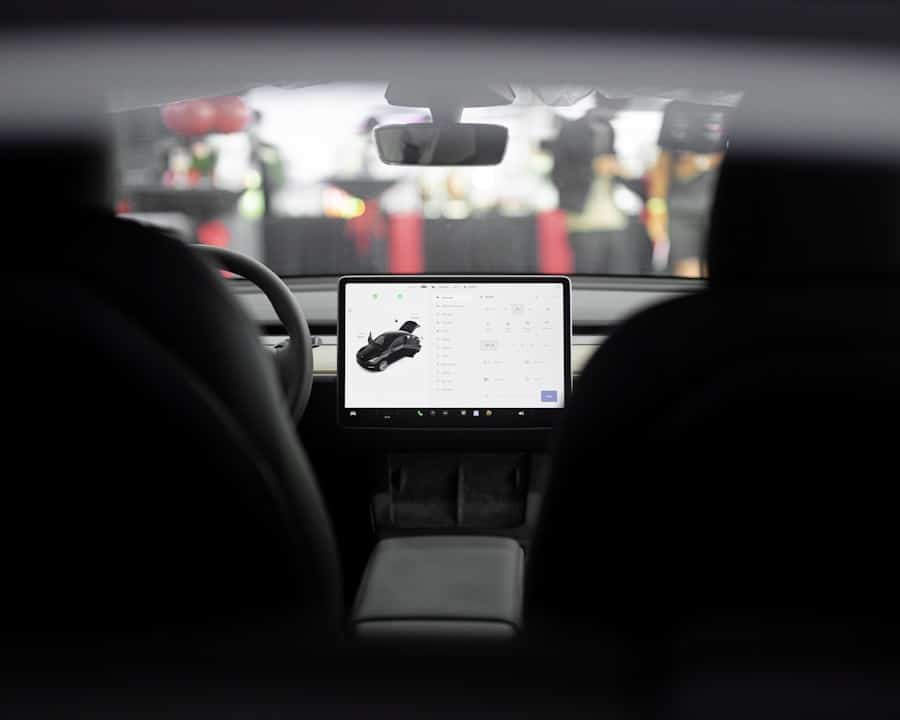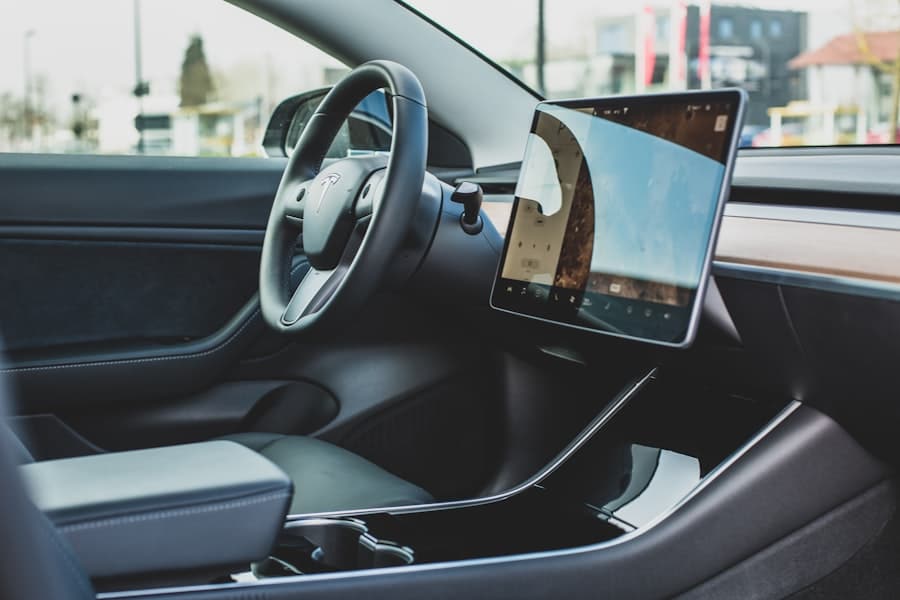Tesla’s Full Self-Driving (FSD) Beta represents a significant leap in the evolution of autonomous vehicle technology. Launched as part of Tesla’s ongoing commitment to revolutionize transportation, the FSD Beta is not merely an incremental update but a bold step toward achieving fully autonomous driving capabilities. This software suite is designed to enable Tesla vehicles to navigate complex environments with minimal human intervention, showcasing the company’s ambition to lead the automotive industry into a new era of mobility.
The FSD Beta has garnered considerable attention, not only for its technological advancements but also for the implications it holds for urban traffic dynamics, safety, and regulatory frameworks. The introduction of the FSD Beta has sparked a mix of excitement and skepticism among consumers, industry experts, and regulators alike. While many view it as a groundbreaking innovation that could redefine personal transportation, others raise concerns about its readiness for widespread deployment.
The FSD Beta is currently available to a select group of Tesla owners who have opted into the program, allowing them to experience and provide feedback on the software’s performance in real-world conditions. This iterative approach to development emphasizes Tesla’s commitment to refining its technology based on user experiences and data collected from actual driving scenarios.
Key Takeaways
- Tesla’s Full Self-Driving Beta is an advanced driver-assistance system that aims to achieve full autonomy in vehicles.
- The technology behind Tesla’s Full Self-Driving Beta includes advanced hardware such as cameras, sensors, and powerful onboard computers.
- Testing Tesla’s Full Self-Driving Beta in urban traffic has shown promising results, with the system being able to navigate complex city environments.
- Safety and legal considerations of Tesla’s Full Self-Driving Beta are important factors to consider, as regulations and public trust play a crucial role in its adoption.
- User experience and feedback on Tesla’s Full Self-Driving Beta have been generally positive, with users reporting smoother rides and improved convenience.
The Technology Behind Tesla’s Full Self-Driving Beta
At the core of Tesla’s Full Self-Driving Beta is a sophisticated suite of hardware and software designed to interpret and respond to a myriad of driving conditions. The system relies heavily on advanced neural networks and machine learning algorithms that process data from an array of sensors, including cameras, radar, and ultrasonic sensors. Tesla vehicles are equipped with up to eight cameras that provide a 360-degree view of the surroundings, enabling the FSD Beta to detect and identify objects such as pedestrians, cyclists, and other vehicles.
This sensor fusion allows the system to create a detailed map of the environment in real-time, which is crucial for safe navigation. The software architecture of the FSD Beta is built on Tesla’s proprietary Autopilot framework, which has been continuously improved since its inception. The neural networks are trained using vast amounts of data collected from Tesla’s fleet of vehicles, allowing the system to learn from diverse driving scenarios encountered by users worldwide.
This data-driven approach enables the FSD Beta to adapt to various road conditions, traffic patterns, and driver behaviors. Moreover, Tesla employs over-the-air updates to enhance the software’s capabilities regularly, ensuring that users benefit from the latest advancements without needing to visit a service center.
Testing Tesla’s Full Self-Driving Beta in Urban Traffic
Testing the FSD Beta in urban environments presents unique challenges that differ significantly from highway driving. Urban traffic is characterized by complex interactions among various road users, including pedestrians, cyclists, and vehicles making unpredictable maneuvers. The FSD Beta must navigate through congested streets, respond to traffic signals, and yield to pedestrians while maintaining a smooth flow of traffic.
This complexity necessitates a high level of situational awareness and decision-making capabilities from the autonomous system. Real-world testing has revealed both strengths and weaknesses in the FSD Beta’s performance in urban settings. For instance, the system has demonstrated impressive capabilities in recognizing traffic signals and stop signs, as well as executing turns at intersections.
However, it has also faced challenges in handling ambiguous situations, such as navigating around construction zones or responding to erratic behavior from other drivers. Feedback from beta testers indicates that while the system can handle many common scenarios effectively, there are still instances where human intervention is required to ensure safety. This highlights the ongoing need for refinement and improvement as Tesla continues to gather data from urban driving experiences.
Safety and Legal Considerations of Tesla’s Full Self-Driving Beta
Safety is paramount when it comes to autonomous driving technology, and Tesla’s Full Self-Driving Beta is no exception. The company has implemented numerous safety features designed to mitigate risks associated with autonomous driving. For example, the system includes safeguards that require drivers to remain attentive and ready to take control at any moment.
Additionally, Tesla has established protocols for monitoring driver behavior during FSD Beta usage, ensuring that users do not become overly reliant on the technology. Legal considerations surrounding the deployment of FSD Beta are equally complex. Regulatory bodies across different jurisdictions are grappling with how to classify and govern autonomous vehicles.
In many regions, existing laws were not designed with self-driving technology in mind, leading to ambiguity regarding liability in the event of an accident involving an autonomous vehicle. As Tesla continues to expand its FSD Beta program, it must navigate these legal landscapes carefully while advocating for regulatory frameworks that support innovation without compromising public safety.
User Experience and Feedback on Tesla’s Full Self-Driving Beta
User experience plays a critical role in shaping the future of Tesla’s Full Self-Driving Beta. Early adopters have provided valuable insights into how the system performs in everyday driving scenarios. Many users report a sense of excitement and novelty when using the FSD Beta, appreciating its ability to handle routine tasks such as lane changes and highway merges with minimal input from the driver.
The convenience offered by features like automatic parking and navigation through complex intersections has resonated well with users seeking a more relaxed driving experience. However, feedback has not been universally positive. Some users have expressed concerns about the system’s occasional hesitations or unexpected maneuvers, which can lead to discomfort or anxiety while driving.
Instances where the FSD Beta misinterprets road conditions or fails to react appropriately in critical situations have raised questions about its reliability. This user feedback is crucial for Tesla as it seeks to refine its technology; understanding real-world experiences allows engineers to identify areas for improvement and enhance overall performance.
Comparing Tesla’s Full Self-Driving Beta to Other Self-Driving Technologies
When evaluating Tesla’s Full Self-Driving Beta against other self-driving technologies available in the market, several key differences emerge. Companies like Waymo, Cruise, and Aurora have developed their own autonomous driving systems, often focusing on specific use cases such as ride-hailing or delivery services. Unlike these companies that may operate within geofenced areas with predefined routes, Tesla’s approach aims for broader applicability across diverse driving environments.
One notable distinction lies in Tesla’s reliance on vision-based systems compared to some competitors that utilize LiDAR technology for environmental mapping. While LiDAR provides high-resolution 3D mapping capabilities, it also adds significant costs and complexity to vehicle design. Tesla’s strategy emphasizes leveraging existing camera technology combined with advanced software algorithms to achieve autonomy without relying on expensive hardware.
This approach has allowed Tesla to scale its technology rapidly across its fleet while continuously improving through data collection from real-world usage.
Future Implications and Developments of Tesla’s Full Self-Driving Beta
The future implications of Tesla’s Full Self-Driving Beta extend far beyond individual vehicle performance; they encompass broader societal changes in transportation dynamics. As autonomous driving technology matures, it has the potential to reshape urban landscapes by reducing traffic congestion and improving road safety. With fewer accidents caused by human error—responsible for approximately 94% of crashes according to various studies—cities could see a significant decrease in injuries and fatalities related to vehicular incidents.
Moreover, widespread adoption of fully autonomous vehicles could lead to changes in urban planning and infrastructure development.
This could result in more efficient traffic flow patterns and reduced need for parking spaces as vehicles could drop off passengers and park themselves in less congested areas.
The Potential Impact of Tesla’s Full Self-Driving Beta on Urban Traffic
The potential impact of Tesla’s Full Self-Driving Beta on urban traffic is profound and multifaceted. As this technology continues to evolve and gain acceptance among consumers, it could fundamentally alter how people navigate cities. The promise of reduced congestion, enhanced safety, and improved accessibility for individuals unable to drive themselves presents an optimistic vision for future urban mobility.
However, realizing this vision will require careful consideration of regulatory frameworks, public acceptance, and ongoing technological advancements. As Tesla refines its FSD Beta through user feedback and real-world testing, it stands at the forefront of a transformative movement in transportation that could redefine our relationship with mobility in urban environments for generations to come.
The article discusses the phone’s design, camera quality, and overall user experience. For those interested in the latest technology and gadgets, this review offers valuable insights into the Samsung Galaxy S23. To read more about this cutting-edge smartphone, check out the article here.
FAQs
What is Tesla’s Full Self-Driving Beta?
Tesla’s Full Self-Driving Beta is a software update that allows Tesla vehicles to navigate through traffic, make turns at intersections, and handle other complex driving tasks without human intervention.
How does Tesla’s Full Self-Driving Beta work in urban traffic?
In urban traffic, Tesla’s Full Self-Driving Beta uses a combination of cameras, sensors, and advanced algorithms to detect and respond to traffic lights, stop signs, pedestrians, and other vehicles. It can also navigate through complex roadways and make lane changes as needed.
What are the limitations of Tesla’s Full Self-Driving Beta in urban traffic?
While Tesla’s Full Self-Driving Beta is capable of handling many urban driving scenarios, it still has limitations. It may struggle in certain complex or unpredictable situations, and it requires the driver to remain attentive and ready to take over at any time.
Is Tesla’s Full Self-Driving Beta legal for use on public roads?
The legality of using Tesla’s Full Self-Driving Beta on public roads varies by location. Some jurisdictions have approved the use of certain autonomous driving features, while others have stricter regulations or require specific permits for testing autonomous vehicles.
What are the potential benefits of Tesla’s Full Self-Driving Beta in urban traffic?
Tesla’s Full Self-Driving Beta has the potential to improve traffic flow, reduce accidents, and make urban driving more convenient for Tesla owners. It could also pave the way for future advancements in autonomous vehicle technology.



